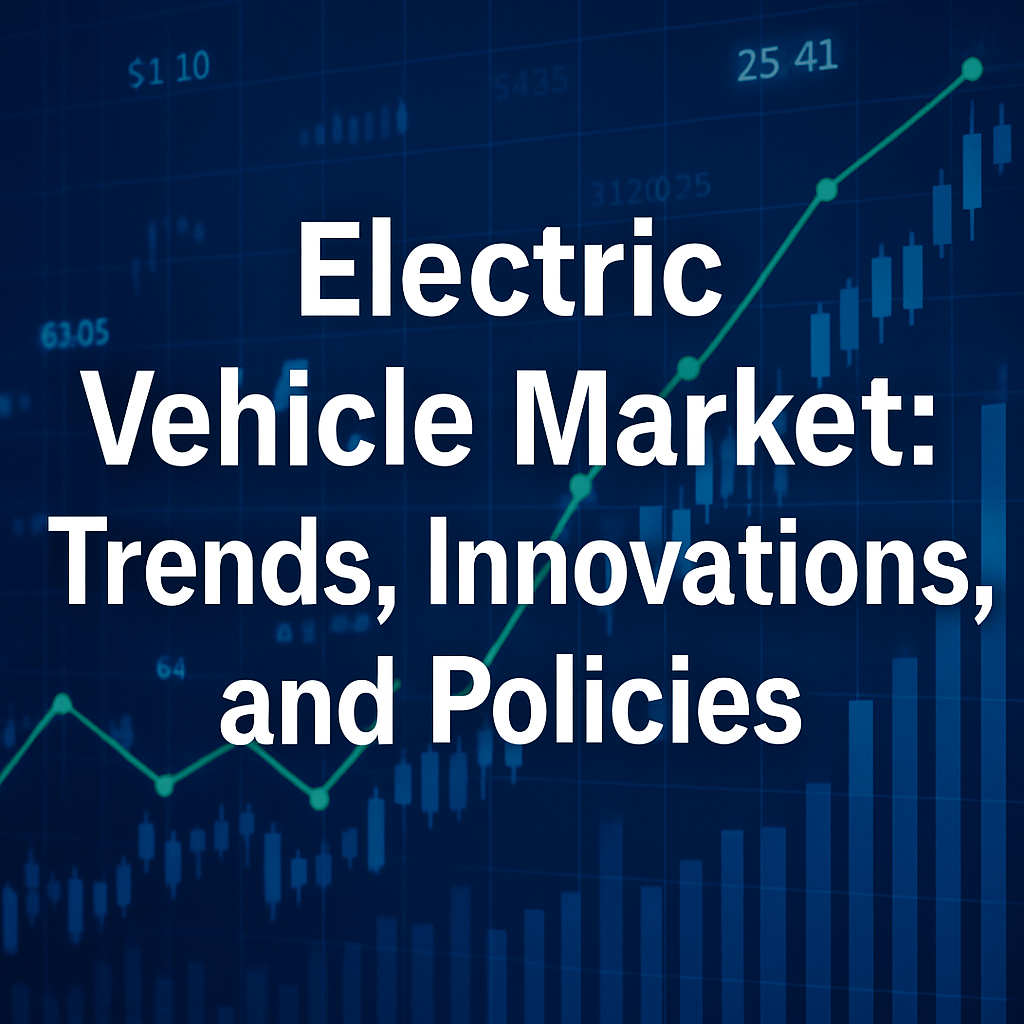Electric Vehicle Market: Trends, Innovations, and Policies

Global Sales Growth and Regional Performance
According to data published by EV research group Rho Motion, global sales of electric and plug-in hybrid vehicles (EVs) reached 1.5 million units in April 2025, up 29% compared with April 2024. However, April volumes were down 12% month-on-month from 1.7 million units in March, reflecting typical seasonal fluctuations in production and delivery schedules.
From January through April 2025, cumulative EV sales hit 5.6 million units, a 29% year-on-year increase. The Regional breakdown is as follows:
- Europe: +25% year-on-year (35% growth in April alone)
- China: +35% year-on-year (32% growth in April)
- North America: +5% year-on-year; –5.6% in April
- Rest of World: +37% year-on-year; +51% in April
“Ongoing tariff negotiations are dominating talk in the electric vehicle industry but quietly, domestic manufacturers in China and the EU continue to perform well and grow market share,” said Charles Lester, Data Manager at Rho Motion.
Policy and Tariff Dynamics Shaping EV Adoption
Policy frameworks remain critical in determining EV market leadership. In Europe, stringent CO₂ targets—95 g/km fleet average by 2025—have driven OEMs to ramp up EV line-ups or face multi-billion euro fines. In North America, the future of the US federal $7,500 EV tax credit is uncertain after draft legislation proposes its elimination by end-2026 and restricts eligibility to manufacturers with under 200,000 units sold by end-2025. Meanwhile, US policymakers are considering 25% import tariffs on vehicles and parts, potentially raising the landed cost of foreign-built EVs.
In China, a 20,000 yuan (≈€2,470) trade-in subsidy for old-for-new EV and hybrid replacements aims to bolster demand amid broader economic headwinds. Chinese OEMs also benefit from streamlined Type Approval processes and local content requirements, supporting battery and semiconductor supply chain integration.
Battery Technology and Supply Chain Developments
Advances in lithium-ion cell chemistry and manufacturing scale continue to reduce pack costs. BloombergNEF reports the average cost of battery packs fell to $132/kWh in early 2025, down from $156/kWh in 2024. High-nickel NMC (nickel-manganese-cobalt) and emerging lithium-iron-phosphate (LFP) technologies are bifurcating the market:
- NMC 811: Energy density ~250 Wh/kg, suited for long-range premium models.
- LFP: Energy density ~160 Wh/kg, prized for safety, cycle life and cost in mass-market compact EVs.
Supply chain bottlenecks for nickel and cobalt are easing as recycled materials and alternative cathode chemistries gain traction. Solid-state battery prototypes promising >350 Wh/kg by 2028 are under pilot at major OEMs and battery start-ups.
Charging Infrastructure and Grid Integration
Globally, the number of public charging points surpassed 1.8 million in April 2025. High-power DC fast chargers (150–350 kW) are now accounting for 20% of new installations, enabling 80 km of additional range in under 10 minutes. Grid operators in Europe are implementing smart-charging platforms with bidirectional vehicle-to-grid (V2G) capabilities to absorb excess renewable output and provide ancillary services.
“The shift to electric is not just about vehicles, it’s about reconfiguring power systems, from transformers to home chargers,” says Christian Brand, Emeritus Professor in Transport, Energy & Climate Change at Oxford University.
Market Outlook and Forecast
The International Energy Agency (IEA) projects that one in four vehicles sold worldwide in 2025 will be electric, pushing global EV stock past 20 million units by year-end. Key forecast drivers include:
- Cost Parity: Full lifecycle cost of EVs is expected to undercut ICE vehicles by 2026 in major markets.
- Model Availability: Over 400 EV models projected by 2030, up from 200 in 2025.
- Regulatory Tightening: EU’s Carbon Border Adjustment Mechanism (CBAM) and California’s Advanced Clean Cars II rule.
Investor and OEM Strategies
Automakers are increasing capital expenditure on EV and battery capacity, with VW, GM and BYD each earmarking over €30 billion through 2026. Equity analysts highlight the importance of:
- Vertical Integration: Control over cell manufacturing and raw materials.
- Software and Services: Recurring revenue from over-the-air updates and connected services.
- Strategic Partnerships: Joint ventures for critical minerals and giga-factory co-investments.
Conclusion
The global EV market is transitioning from niche to mainstream, but politics, policy frameworks and infrastructure readiness will determine regional leadership. As battery costs fall and charging networks expand, total cost of ownership advantages will accelerate consumer adoption, reshaping the global automotive landscape.